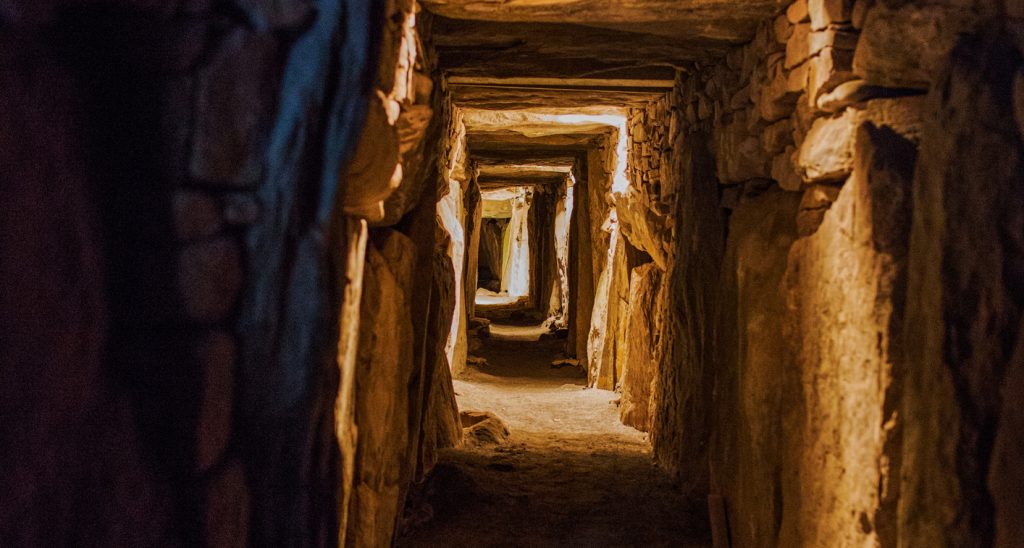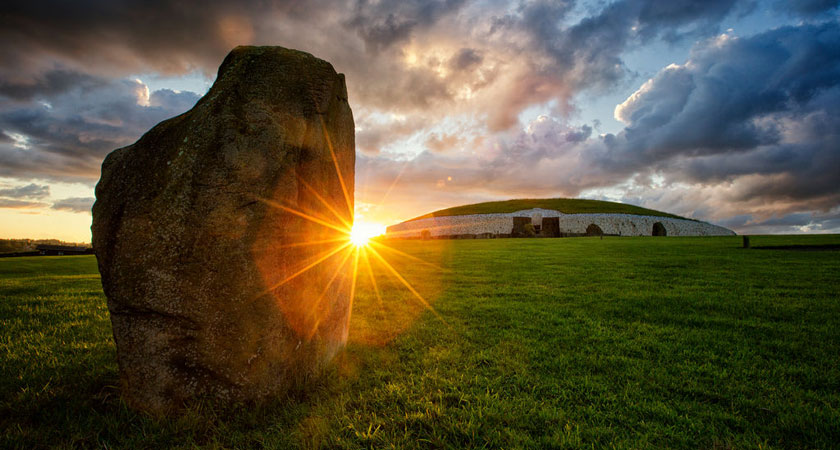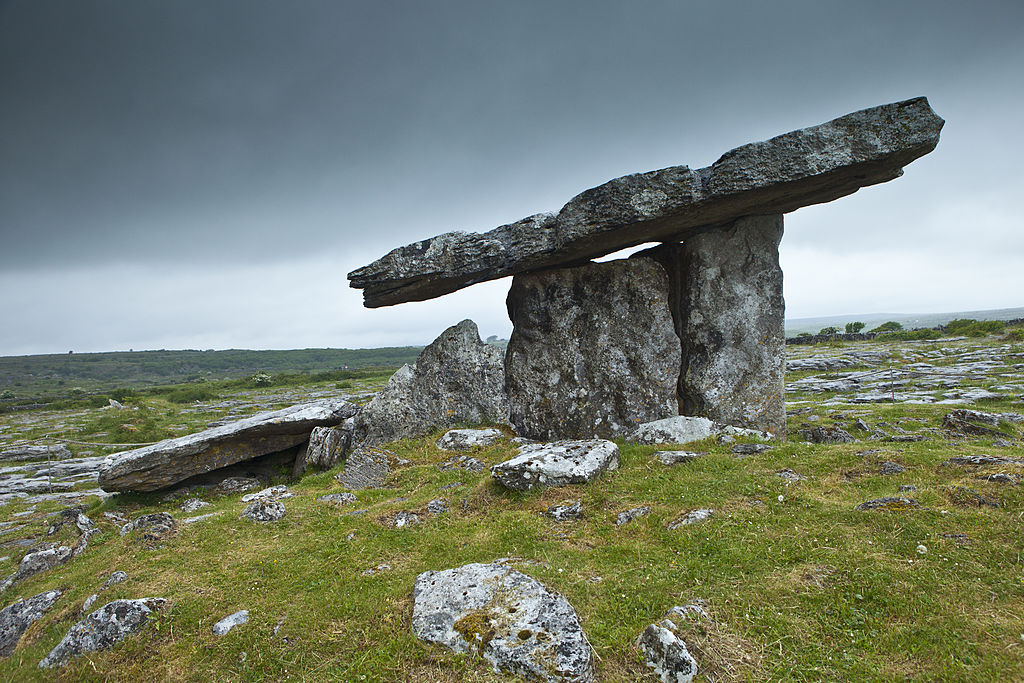RESEARCHERS AT Trinity College Dublin have shed light on the genetic makeup of a man buried in County Meath's famous neolithic tomb, Newgrange.
A team of archaeologists and geneticists have discovered that the genome of an adult male buried in the heart of the monument's passage tomb points to 'first-degree incest', revealing that he was a member of the ruling elite which used inbreeding to keep a royal bloodline, similar to ancient Egyptian Pharaohs.
'First degree incest' relates to close relatives-- such as full siblings-- producing offspring.
The neolithic monument Newgrange is over 2,500 years older than the Egyptian pyramids, dating back to at least 5,000 years ago, and is famous for its annual Winter Solstice which floods the passage with light at dawn on the shortest day of the year.
 Newgrange: The passage tomb is flooded with light at dawn on the winter solstice each year (Getty)
Newgrange: The passage tomb is flooded with light at dawn on the winter solstice each year (Getty)However, not much is known about the ancient people whose remains are buried within the monument, and this discovery is a huge step forward in piecing together the type of society present when Newgrange was built.
Author of the paper which revealed the genetic makeup of the ancient remains, Dr Lara Cassidy, wrote in international journal Nature that she had "never seen anything like it".
"We all inherit two copies of the genome, one from our mother and one from our father; well, this individual’s copies were extremely similar, a tell-tale sign of close inbreeding.
"In fact, our analyses allowed us to confirm that his parents were first-degree relatives.”
 Newgrange, Co Meath (Image: Tourism Ireland)
Newgrange, Co Meath (Image: Tourism Ireland)Professor of Populations Genetics at Trinity College, Prof Dan Bradley, said the prestige of the burial indicates a "hierarchy so extreme that the only partners worthy of the elite were family members."
The researchers were able to connect multiple remains across the island to the man buried in Newgrange, with Dr Cassidy explaining they appear to be a part of "a powerful extended kin-group who had access to elite burial sites in many regions of the island for at least half a millenium".
Trinity's researcher's genome survey spanned over 2,000 years and also revealed another unexpected result: the world's earliest confirmed case of Down Syndrome.
 Ireland's oldest burial site, the Poulnabrone Portal Dolmen megalythic burial tomb, 3800BC, in The Burren, County Clare, Ireland (Photo by Tim Graham/Getty Images)
Ireland's oldest burial site, the Poulnabrone Portal Dolmen megalythic burial tomb, 3800BC, in The Burren, County Clare, Ireland (Photo by Tim Graham/Getty Images)A male infant buried in Ireland's oldest-known burial structure, Poulnabrone portal tomb, and who is believed to have lived over five and a half thousand years ago, was found to have the chromosomal disorder.
Previously, the oldest known case of Down Syndrome was discovered in a child who had died approximately 1500 years ago in Medieval France.
More information on the Trinity College researchers' fascinating study can be found in the Nature journal.

